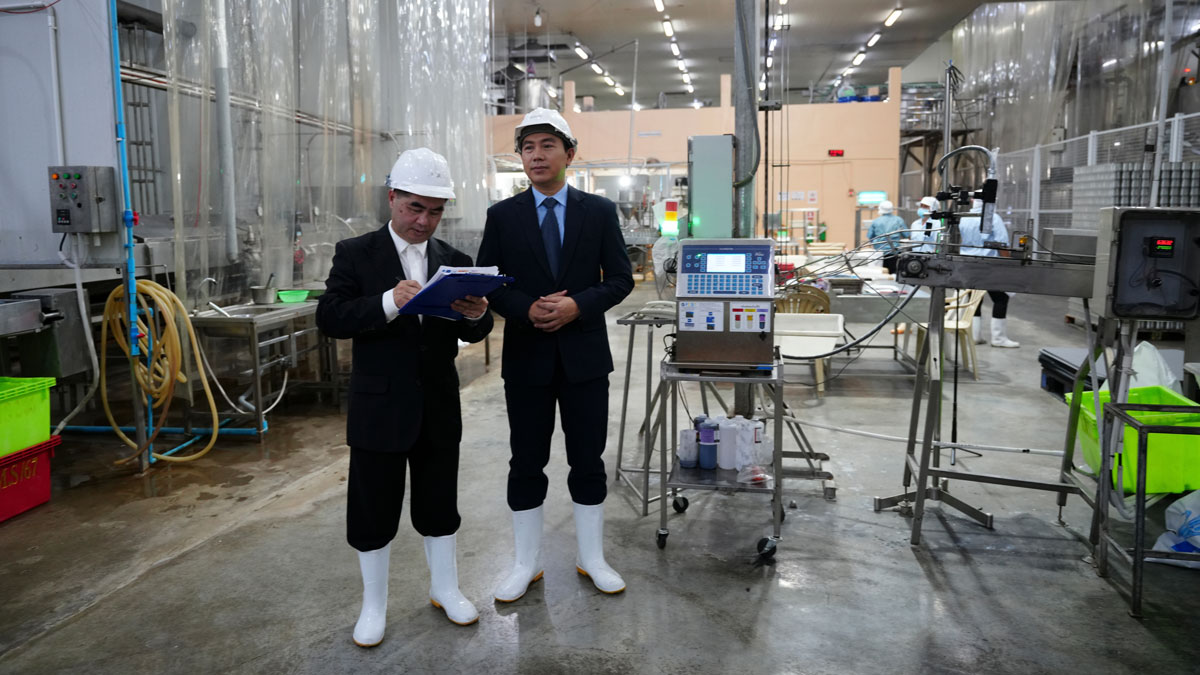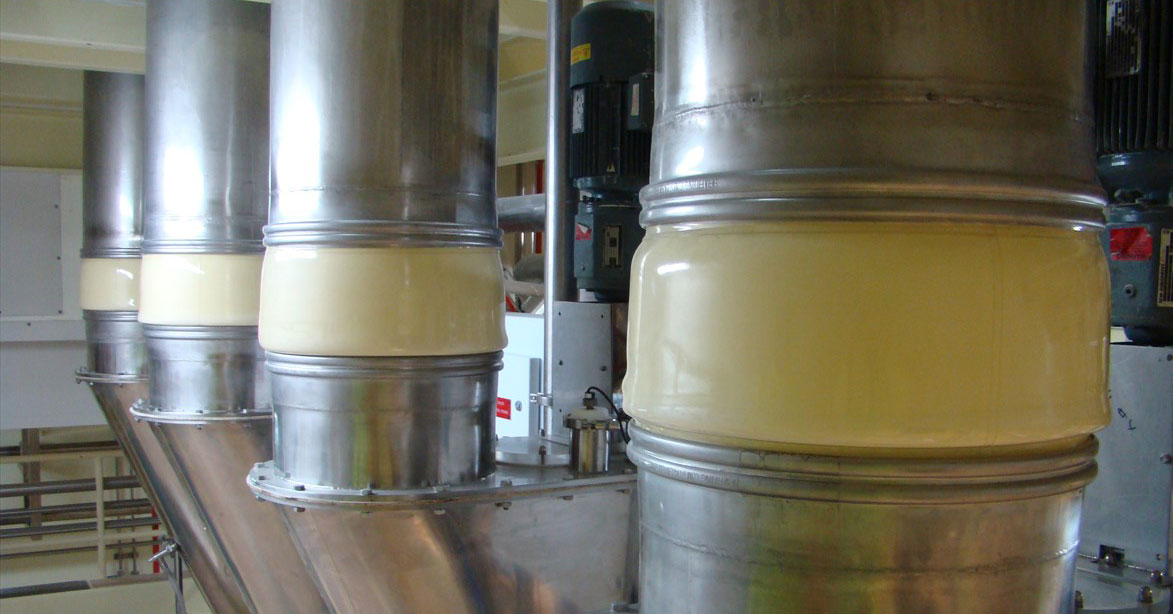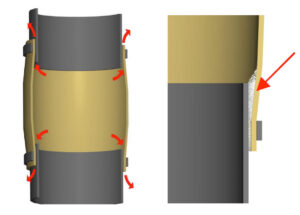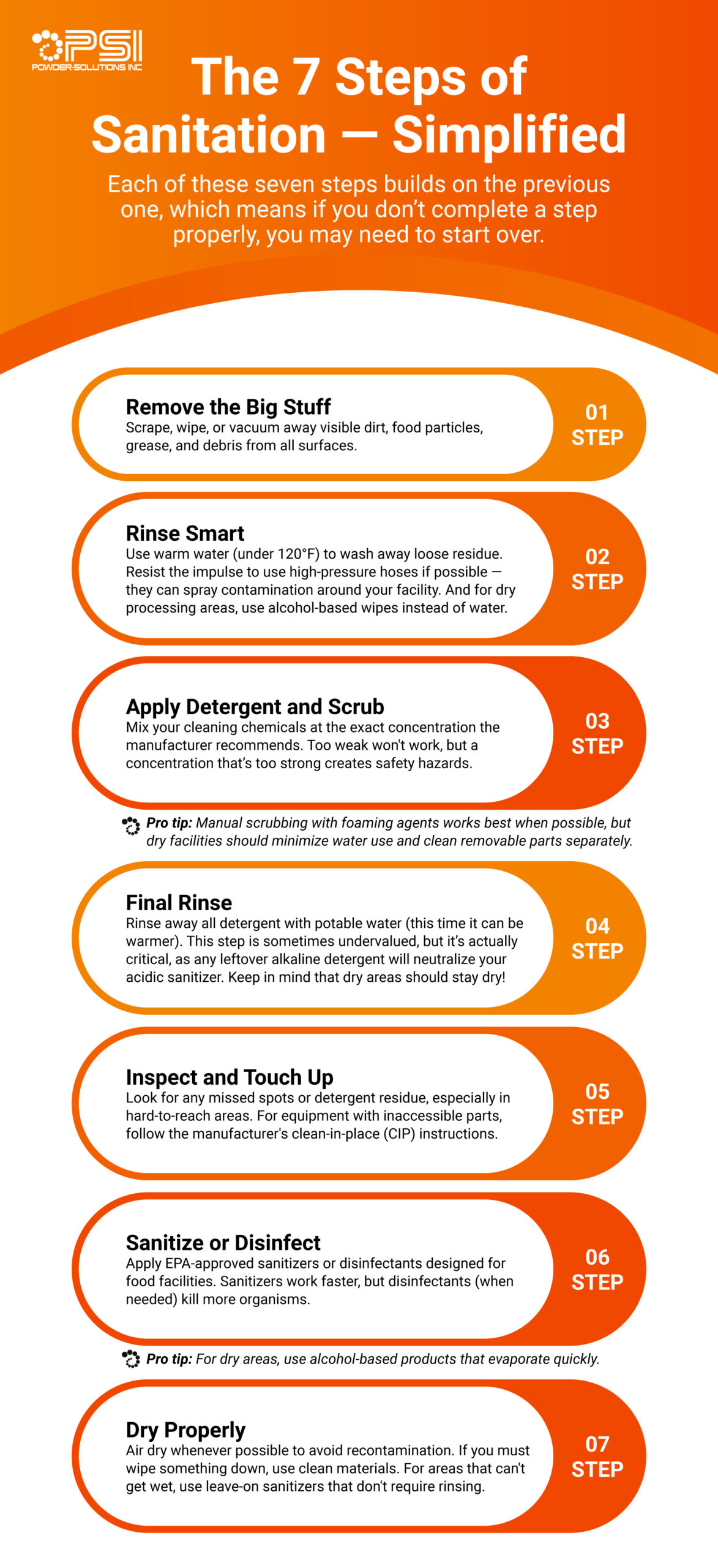Food Production Cleaning on a Budget: Maximum Impact, Minimum Waste
Considering that foodborne illnesses are almost entirely preventable with proper food preparation, handling, and storage, it’s frustrating that this statistic hasn’t gotten better. In fact, food poisoning deaths are actually becoming more common, even as recalls are going down.
In this blog, we’ll dig into why we’re still seeing some of those numbers, and some smart ways that food production facilities can make maintaining cleanliness easier and less expensive. But first, let’s start with a few basics.
What Are the Standards for Food Manufacturing Sanitation?

Understanding the current regulatory landscape isn’t just about compliance. It’s about protecting your business, your customers, and your reputation.
The FDA’s Food Safety Modernization Act (FSMA) represents the most sweeping reform of food safety laws in over 70 years, shifting the focus from responding to contamination to preventing it. Under FSMA, food production facilities are required to implement comprehensive food safety plans, conduct hazard analyses, establish preventive controls, and maintain detailed records. Meanwhile, USDA oversight applies to meat, poultry, and egg products, demanding strict HACCP (Hazard Analysis Critical Control Points) protocols.
For food production facilities, these regulations are also common-sense best practices that can prevent the kinds of contamination events that destroy decades of trust.
What’s the Difference Between Cleaning, Sanitizing, and Disinfecting?
While sometimes these words are used interchangeably, cleaning, sanitizing, and disinfecting are 3 distinct but interconnected steps in food production facility hygiene.
Cleaning is the physical removal of visible dirt, debris, and organic matter from surfaces using detergents, brushes, and water. Think of it as the foundation — you’re removing places for bacteria to hide. Without proper cleaning first, sanitizing and disinfecting are less effective because dirt and debris can often shield harmful microorganisms from chemical treatments.
Sanitizing reduces the number of bacteria, viruses, and fungi to safe levels as defined by public health standards. But disinfecting goes further, eliminating virtually all pathogenic microorganisms, including bacterial spores, and is typically reserved for outbreak situations or deep cleaning protocols.
Let’s explore these in more detail, as they apply to a food production facility.
How Maintenance Managers at Food Production Facilities Can Reduce Cleaning Times Without Increasing Risk

When it comes to maintaining hygiene standards in powder processing facilities, traditional connection methods can leave behind a lot of mess. The more mess, the more time proper cleaning can take. And the more time cleaning takes, the more it can eat into profits. Fortunately, BFM® fitting technology is designed to minimize cleaning challenges for food production facilities in a few ways.
First, BFM® fittings are actually designed for the task at hand. In fact, their flexible connectors were created specifically for powder handling systems, featuring a unique snap-in design that creates completely sealed connections between equipment.
And unlike rigid piping or loose connections that can leak powder, harbor contaminants, or create hard-to-clean crevices, BFM® fittings use two welded spigots and a snap-in sleeve that seals from the inside, eliminating these hygiene headaches while maintaining the flexibility your processing lines need. The key is in their construction — food-grade materials, smooth interior surfaces, and a design that prevents powder accumulation in joints and connections where bacteria love to hide, as illustrated below.

While we recommend removing and wiping the connectors after CIP to ensure no residual chemicals remain, this process is much simpler than traditional systems. Equally important, the sealed nature of BFM® connectors creates a 100% dust-tight environment during production, which not only keeps your facility cleaner but also reduces the risk of cross-contamination between product runs.
Click the link below to read about how one dairy facility used BFM® fittings technology to reduce downtime as well as costs.
📞 Contact Us to explore how BFM® fittings can help your powder processing line achieve a dust-free, high-efficiency operation.


